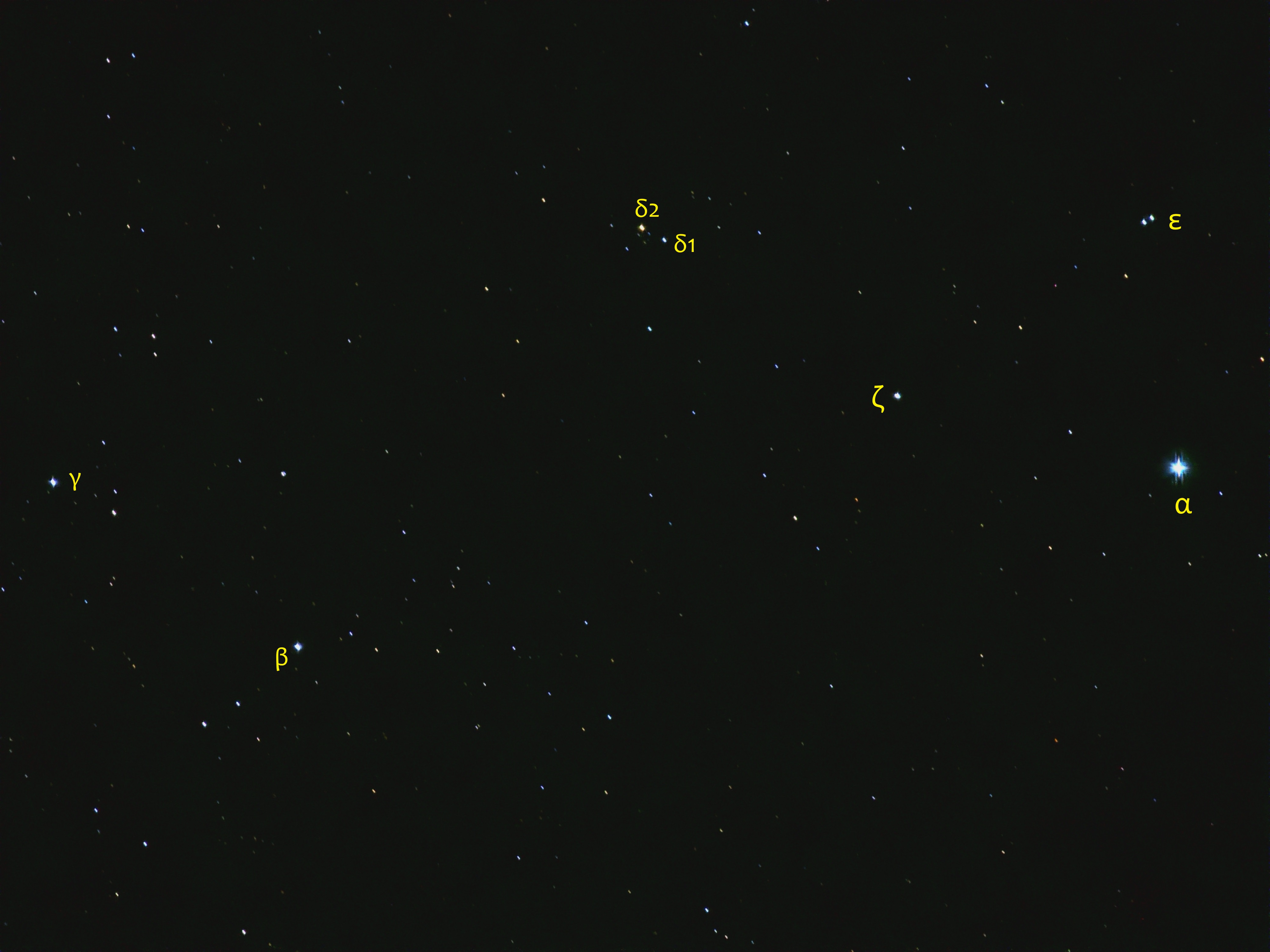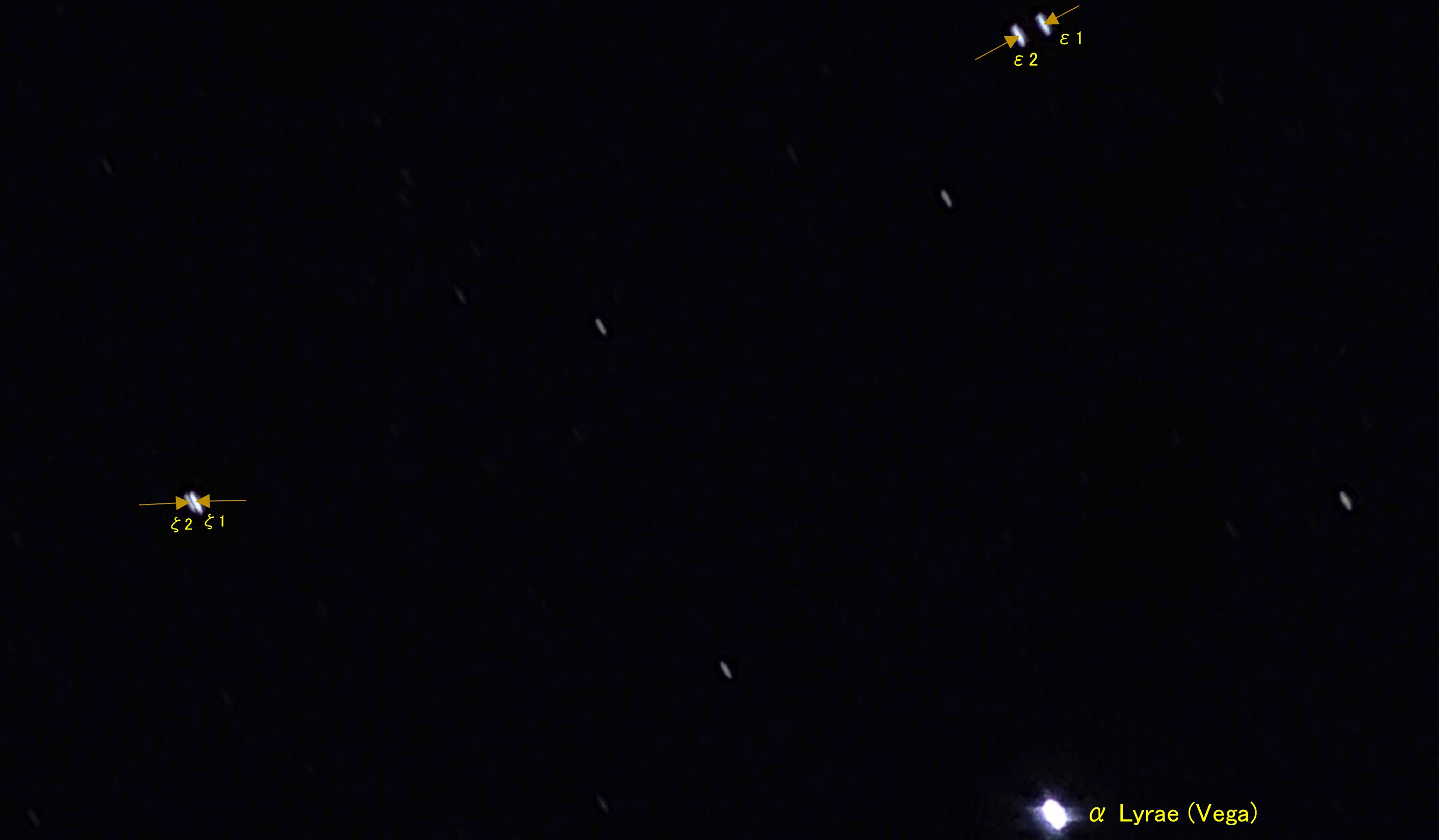
S23 Ultra Resolution Test: Lyra Double Stars
Sep 9, 2023
The photographs below demonstrate the resolution capability of the S23 Ultra for photographing zoomed star details.
The example given is for the two double stars :
ε Lyrae (separation 208 ∠")
and
ζ Lyrae (separation 44 ∠" comparable to the theoretical resolution of the human eye with perfect vision).
Both photos were taken with the periscope x10 zoom camera, without extra digital zoom, (12 MP f/4.9 f_eq=240mm). This camera has an aperture diam of ~ 5mm so the expected
best case (theoretical) angular resolution for resolving detail using Dawe's limit is 116/5 ~ 25 arc", so under very good observing conditions
and with good camera optics, it should be possible to "split" ζ Lyrae. The focus was carefully adjusted manually to ensure the sharpest star images for this type of test.
The first photo was shot using the 4min astromode with an exposure time for each component-pict of 6 sec and the ISO level automatically
set at 1600.
The FOV at 10X of 8.6° x 6.5° nicely frames Lyra. The seeing was steady.
The wider double ε Lyrae is clearly resolved, a good rudimentary test for sharpness of focus.
However, the exposure stacking evidently lowers the resolution capability and
the double ζ Lyrae is not resolved when the photo is zoomed in. The 6 sec exposure time (which can't be adjusted manually) is
a bit high and results in star trailing (ideally, the exposure time should be 2 sec). A small amount of star trailing however can
be useful in identifying artifacts in the image that aren't stars:

The 2nd image was taken in Pro mode with the same x10 periscope camera but the exposure setting was manually set at
10 sec. It was found that a low ISO setting (400) revealed more detail since bright stars in this case won't wash out details in
nearby stars. Also star trailing in this case facilitates seeing the double separation.
The photo below was zoomed in after shooting and cropped to show that the double ζ Lyrae is indeed resolved. The lines show the
measurement points for the double star separation. Note that the lines are angled differently for the two doubles. This is because the
doubles have different position-angles relative to each other. ζ Lyrae has a measured separation about 1/5 that of ε Lyrae as expected.
So this demonstrates that with careful adjustment of exposure conditions, the S23 Ultra periscope camera can achieve
good resolution for zoomed astrophotos.

Vega Brightened
Stellarium Mobile Plus Map Of Lyra



